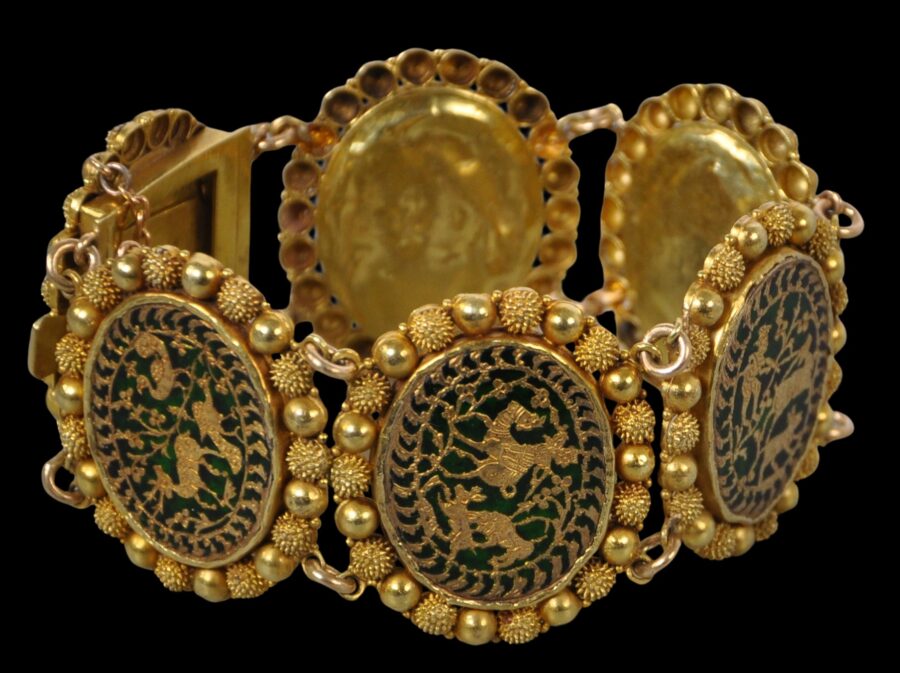Enquiry about object: 9682
Indian Partabargh Theva-Work Gold Bracelet
Partabargh, Rajasthan, and Delhi, India circa 1850
circumference: approximately 18cm, length of individual panels: 3.5cm, weight: 58g
Provenance
UK art market
The fine bracelet comprises six oval panels of glass over scenes executed in gold foil against a green foil background – a type of work known as theva work. The panels are decorated with peacocks, deer, and hunting scenes including a lion, a hunter with a gun, and a hunter astride a camel.
Each panel is surrounded by gold spheres alternating between plain spheres, and those covered in small spikes, which is known as babul work, giving the impression of a chinar or plane tree seed pod, these trees being native to northern India.
The panels have then been linked by gold loops.
There is a gold catch and a gold safety chain.
Theva work (‘theva’ means ‘setting’) was a specialty of Raj Soni goldsmiths from Partabargh in Rajasthan. The technique involved incising and then cutting out small scenes and images from thin 24 carat gold. This was then fused onto glass behind which green and sometimes red foil was attached. The whole is then held in place by silver or in the case here, gold, mounts. Typically, theva work shows village scenes or Hindu deities. The example here shows two peacocks amid foliage and flowers.
Babul work seems to have been a specialty of Delhi goldsmiths. Examples of gold jewellery featuring babul work were shown at the Paris Universal Exhibition of 1855. So it seems likely that the theva panels were made in Partabargh and then sent to Delhi for finishing or made in Delhi by a goldsmith from Partabargh.
Such a bracelet initially would have been for a European client but then wealthier and courtly Indians also would wear Indian-made jewellery that originally was intended for the local expatriate and European market.
A related theva and gold bracelet now in the National Museum, Delhi, is illustrated in Sharma & Varadarajan (2004, p. 100).
The bracelet here is in a fine and wearable condition. The theva work is unusually fine. Overall, this is a particularly good example of mid-19th century colonial Indian gold jewellery work.
References
Barnard, N., Indian Jewellery, V&A Publishing, 2008.
Sharma, R.D. & M. Varadarajan, Handcrafted Indian Enamel Jewellery, Roli Books, 2004.











